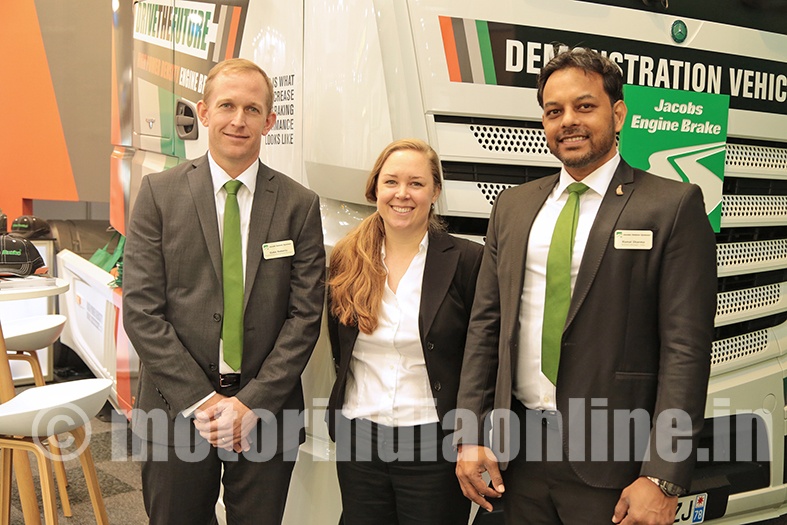At the IAA 2016, Jacobs Vehicle System displayed the High Power Density (HPD) Engine Brake – the future of engine braking. It allows two compression release events per count rotation instead of the conventional one.

Gabe Roberts, Director – Product Development, Jacobs Vehicle Systems, said: “At the top of the compression stroke, a conventional engine brake will open the exhaust valve to get the retarding effect, as the energy from the compression stroke is not returned back to the crank. With this new HPD technology, we are using cylinder deactivation to deactivate the intake in the exhaust main events to get a second compression release event at the top of the exhaust stroke. Two compression release events for every one cam rotation will give you twice as much braking power as a conventional engine brake. It will give you braking power that is comparable to that of a driveline retarder, but without drawbacks such as parasitic losses which impact fuel economy, or significant cost. HPD technology is much more cost effective and weights far less than a typical driveline retarder.”
Another significant benefit of HPD is that it saves fuel throughout the entire rpm range, especially at low rpm. “It improves your retarding power. Instead of down shifting to get higher braking power, you can keep your engine speed down, keep your gear selection low, and still get high braking power throughout the whole rpm range,” expressed Roberts. Notably, the OEM doesn’t have to change the radiator, doesn’t have to change the drive line, doesn’t have to make changes to the cooling system like a driveline retarder requires. The HPD system goes in the existing valve train of the engine without significant modification.
Scenario in India
In India, the market for retarders is in the premium bus segment. “A bus fleet operator who shells out around 10 lakhs could otherwise get HPD for a fraction of that without all the auxiliary costs that goes in to cooling the conventional retarder. It certainly translates into big savings for OEMs. The message to the Indian OEMs is that they can save a lot by using HPD as an alternative solution to retarders,” said Kunal Sharma, Country Manager, Jacobs Vehicle System, India.
“We are working on engine brakes for Cummins’ B Series engine (all platforms) and currently running field trials. We have positive feedback from truck drivers about improved performance of the braking system currently in use. We are providing them two options; either use our exhaust brakes and engine brake combination to get more power, or just use our engine brake and integrate it upstream with the existing exhaust brake to increase the performance. It has been received quite well,” remarked Sharma.